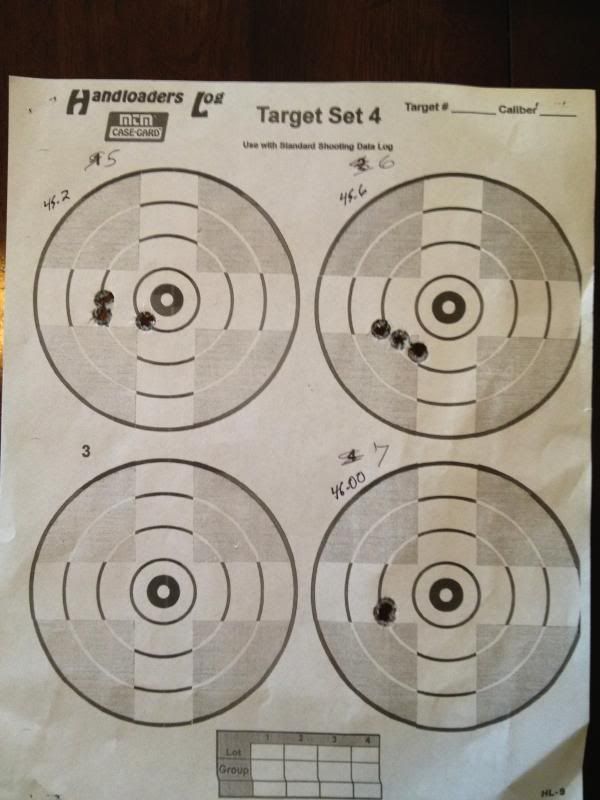Can you guys help me interpret this OCW? They all look pretty similar to me....
I went and did an OCW test today for my Beanland .308 shorty with a 16.5" barrel.
I used Varget, and 168 Nosler Custom Comps inside of LC10 1xfired brass, and 210M.
These are 3 shot groups @ 100 yards.
Average Speeds were:
43.5 - 2572 ES-14 SD-7
43.9 - 2590 ES 60 SD 30
44.4 - 2610 ES 5 SD 3
44.8 - 2631 ES 6 SD 3
45.2 - 2657 ES 5 SD 3
45.6 - 2669 ES 21 SD 11
46.0 - 2695 ES 11 SD 6


I went and did an OCW test today for my Beanland .308 shorty with a 16.5" barrel.
I used Varget, and 168 Nosler Custom Comps inside of LC10 1xfired brass, and 210M.
These are 3 shot groups @ 100 yards.
Average Speeds were:
43.5 - 2572 ES-14 SD-7
43.9 - 2590 ES 60 SD 30
44.4 - 2610 ES 5 SD 3
44.8 - 2631 ES 6 SD 3
45.2 - 2657 ES 5 SD 3
45.6 - 2669 ES 21 SD 11
46.0 - 2695 ES 11 SD 6




